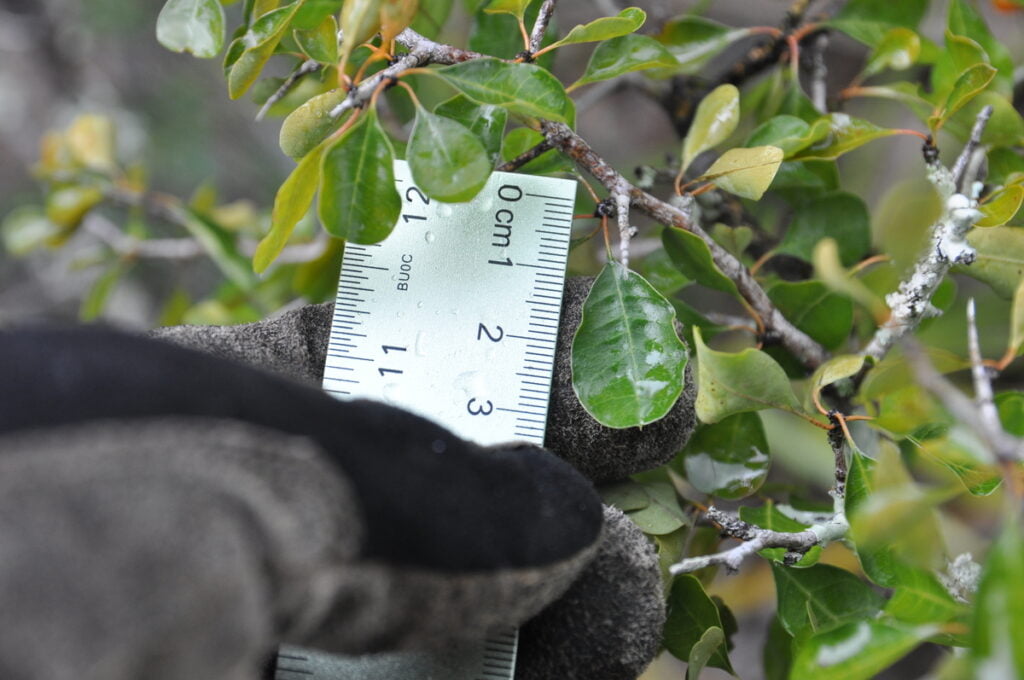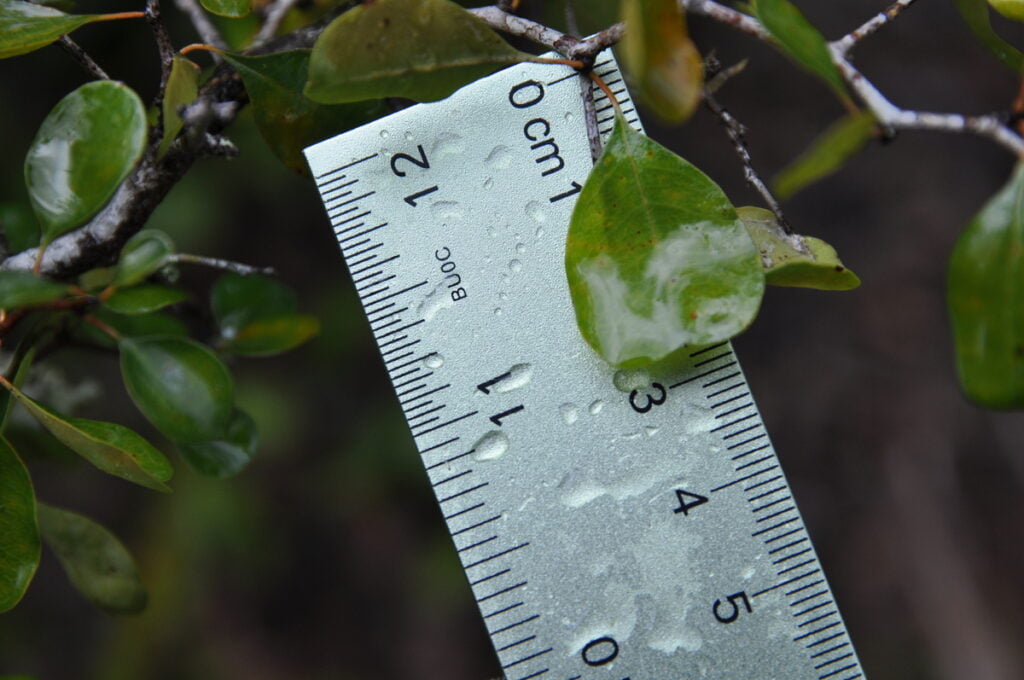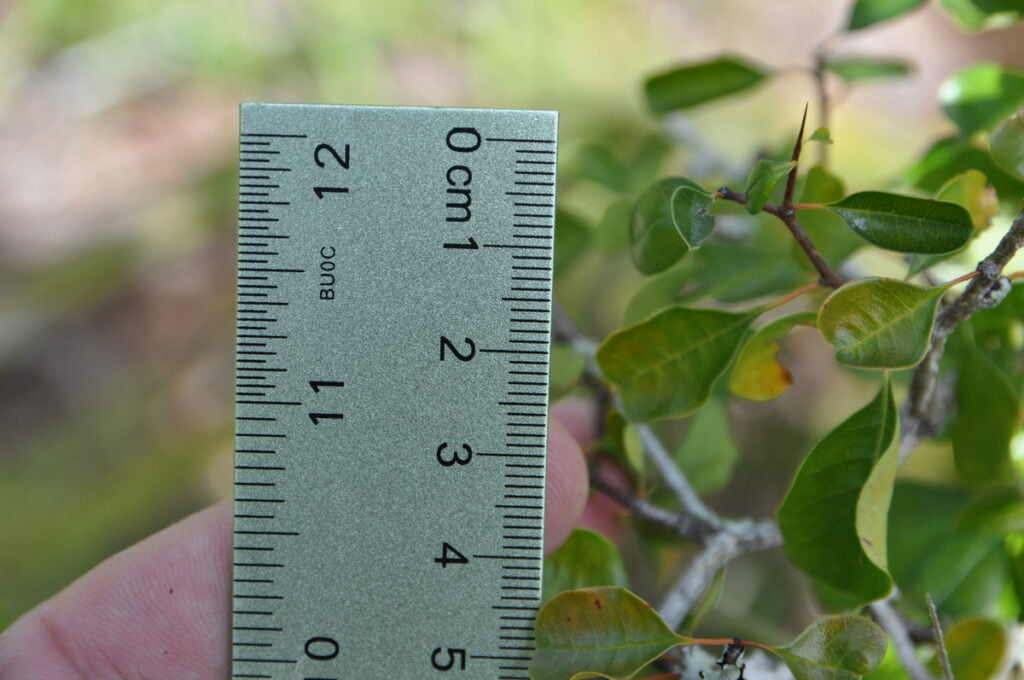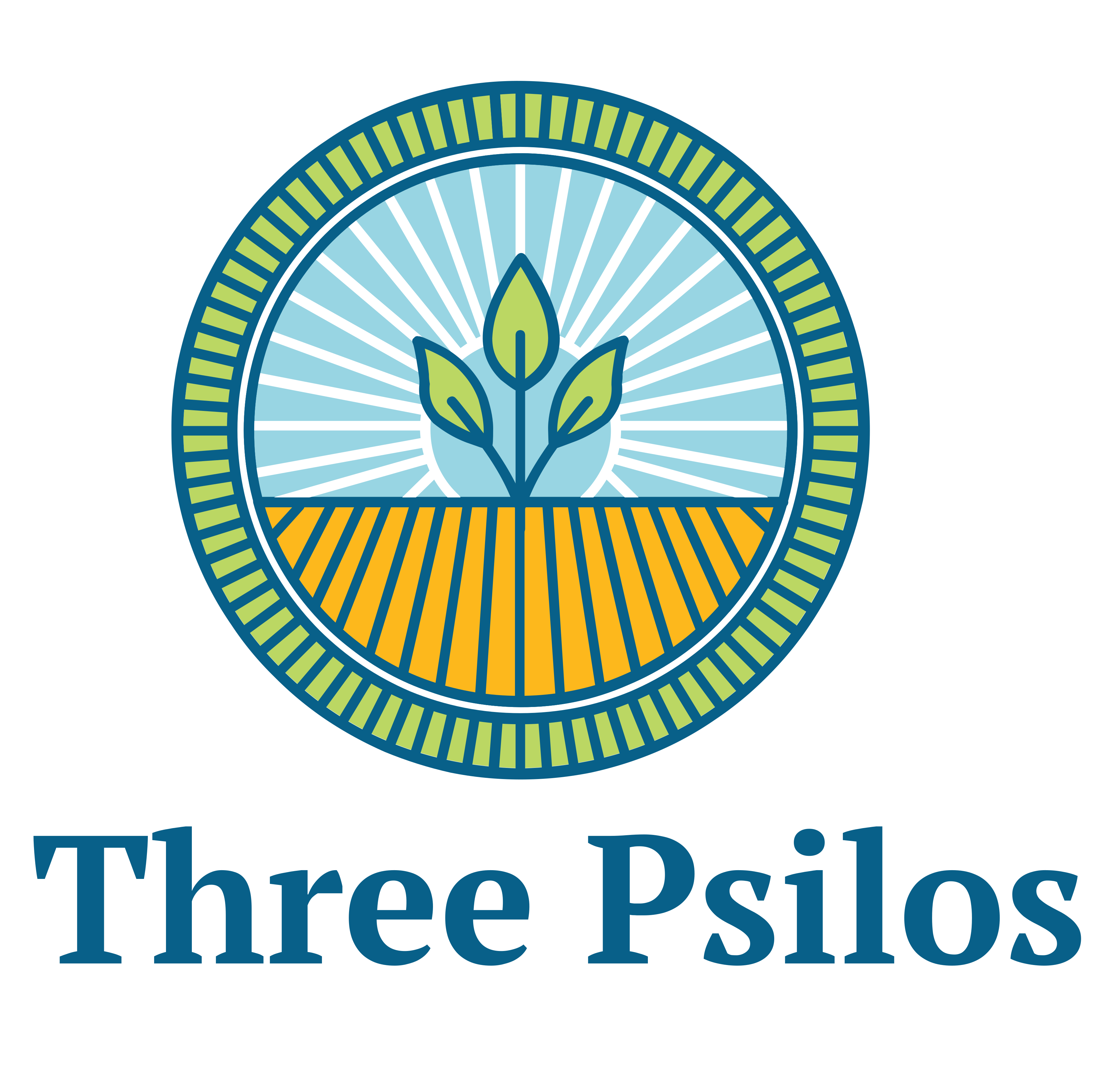Summary: Through simple, phytomorphological comparison, it can be proven that at least two of the original population of “Florida Jujube” shrubs, found in Polk County in 1987, are in fact Parry’s Jujube (Pseudoziziphus Parryi), likely transplanted from the California Chaparral in the early twentieth century.
Three Psilos, Inc. has proven that at least two of the original population of what have been identified as “Florida Jujube” shrubs, are actually Parry’s Jujube (Pseudoziziphus Parryi).
Using observable, physical traits, that anyone could themselves observe, the evidence is clear that “Florida Jujube” shrubs numbered #22 and #23 are indeed “Parry’s Jujube.”
What Are The Differences?
To determine the species of Pseudoziziphus shrub numbers #22 and #23 requires a comparison of the official description of each P. celata and P. parryi, and itemizing the differences. Not as simple as it sounds.
Let’s start with the official, full descriptions from the Flora of North America (FNA), specifically volume 12 for family Rhamnaceae.
Full Descriptions
Pseudoziziphus celata
FNA | Family List | FNA Vol. 12 | Rhamnaceae 4. Ziziphus celata Judd & D. W. Hall, Rhodora. 86: 382, fig. 1. 1984. [C E] Florida jujube Florida jujube
Condalia celata (Judd & D. W. Hall) M. B. Islam
Shrubs or small trees, 1–2 m; secondary branches gray, not pruinose, glabrous, thorn-tipped, axillary thorns solitary or paired and unequal, with 1–3 nodes, bearing several short shoots and often small tertiary thorns; stipular spines absent. Leaves deciduous, alternate, sometimes fascicled; blade dark green, oblong-elliptic to elliptic-ovate or elliptic-obovate, 0.5–1 cm, coriaceous, base cuneate to slightly attenuate, margins entire, apex rounded to shallowly emarginate, surfaces glabrous; 1-veined. Inflorescences fascicles on short shoots, 2–4-flowered, or flowers solitary. Flowers: hypanthium and sepals greenish; petals white. Drupes yellow, orange, or brownish, globose to ovoid or oblong, 10 mm.
Flowering Mar–Apr. White sand, pastures on former sand hills, Turkey oak and oak-hickory scrub; of conservation concern; 100 m; Fla.
Pseudoziziphus parryi
FNA | Family List | FNA Vol. 12 | Rhamnaceae 3. Ziziphus parryi Torrey in W. H. Emory, Rep. U.S. Mex. Bound. 2(1): 46. 1859. (as Zizyphus). Parry’s jujube or abrojo, California crucillo, lotebush Parry’s jujube or abrojo, California crucillo, lotebush
Condalia parryi (Torrey) Weberbauer; Condalia parryi var. microphylla I. M. Johnston; Condaliopsis parryi (Torrey) Suessenguth; Ziziphus parryi var. microphylla (I. M. Johnston) M. C. Johnston
Shrubs, 1–4 m; secondary branches pale greenish yellow to purplish, not pruinose, glabrous, thorn-tipped, axillary thorns solitary, with 0–1 nodes, without tertiary thorns, stipular spines absent. Leaves deciduous, alternate, sometimes fascicled; blades olive green, elliptic to obovate, 1–2.5(–3) cm, herbaceous, base obtuse to rounded, margins entire, apex rounded to cuneate or shallowly emarginate, surfaces glabrous; 1-veined. Inflorescences usually fascicles, 2–5-flowered, rarely flowers solitary. Flowers: hypanthium and sepals purplish to greenish; petals white. Drupes brownish to orange or purplish brown, ovoid to ellipsoid, 10–20(–25) mm.
Flowering (Feb–)Mar–May. Chaparral, pinyon-juniper woodlands, rocky washes and arroyos, hill slopes; 600–1000(–1600) m; Calif.; Mexico (Baja California).
Differences
To simplify, lets consider only those morphological differences for the two species when flowers are not present and when leaf growth is at its maximum; in other words, at the end of the growing season. This is right before all the leaves fall off, or late August in the region southeast of Frostproof, which is the Florida city nearest the original population.
To assist, let’s color those traits which are identical in green, those traits which differ in red. If traits are different words describing essentially the same thing, we will leave those as black; e.g. ‘dark green’ and ‘olive green’ are effectively the same.
Pseudoziziphus celata: Shrubs or small trees, 1–2 m; secondary branches gray, not pruinose, glabrous, thorn-tipped, axillary thorns solitary or paired and unequal, with 1–3 nodes, bearing several short shoots and often small tertiary thorns; stipular spines absent. Leaves deciduous, alternate, sometimes fascicled; blade dark green, oblong-elliptic to elliptic-ovate or elliptic-obovate, 0.5–1 cm, coriaceous, base cuneate to slightly attenuate, margins entire, apex rounded to shallowly emarginate, surfaces glabrous; 1-veined.
Pseudoziziphus parryi: Shrubs, 1–4 m; secondary branches pale greenish yellow to purplish, not pruinose, glabrous, thorn-tipped, axillary thorns solitary, with 0–1 nodes, without tertiary thorns, stipular spines absent. Leaves deciduous, alternate, sometimes fascicled; blades olive green, elliptic to obovate, 1–2.5(–3) cm, herbaceous, base obtuse to rounded, margins entire, apex rounded to cuneate or shallowly emarginate, surfaces glabrous; 1-veined.
These descriptions are surprisingly similar; the “Florida Jujube” seems to be simply a lightly-edited version of “Parry’s Jujube.” Parry’s Jujube was easily found in the California chaparral as part of a survey after the Mexican war (Rep. U.S. Mex. Bound., Bot. [Emory] Volume 2, part 1, Botany, 1859 [1-20 Apr 1859]).
Polk Population Traits
Pseudoziziphus species #22 and #23 found in the original Polk county population both currently exhibit the following physical traits:
- Leaves to 3cm
- No tertiary thorns
- Secondary branches purplish-brown
- One node on secondary branches (sometimes 2)
These traits identify Pseudoziziphus parryi, and disqualify Pseudoziziphus celata.



Video Hike to #22 & #23
An unedited, head-mounted action video of the hike through the scrubs to the site of the original Polk county Florida Pseudoziziphus population, which seems reduced to only these two, neighbor shrubs #22 and #23. Includes footage of the photographs as they were taken.
Conclusion
It is clear to anyone who visits the scrubs themselves, that the Ziziphus bushes found in Polk county in the late 1980s now definitely display traits of Parry’s Jujube, even if the traits observed in the late 1980’s were different than today. Further, the original Pseudoziziphus shrubs #22 and #23 look nothing like those being developed by Bok Gardens and/or Archbold Biological Station.
Three Psilos, Inc. does agree, however, that Parry’s Jujube is good for Florida’s wildlife. This list of supported wildlife includes Bobwhite Quail and other birds, Gopher Tortoises, White-tailed Deer, small mammals, and various reptiles and insects.
We believe “False Jujubes” (Pseudoziziphus) can be naturalized into the Florida scrubs, the Texas shrublands, the California chaparral, and any part of Northern Mexico. We further believe that everyone who wants a “False Jujube” should have one. Certainly, every Gopher Tortoise should have a Pseudoziziphus near its burrow, across all of the southern United States and northern Mexico… from ocean to ocean.
With Three Psilos, Inc., you can get the world you’ve always wanted.

